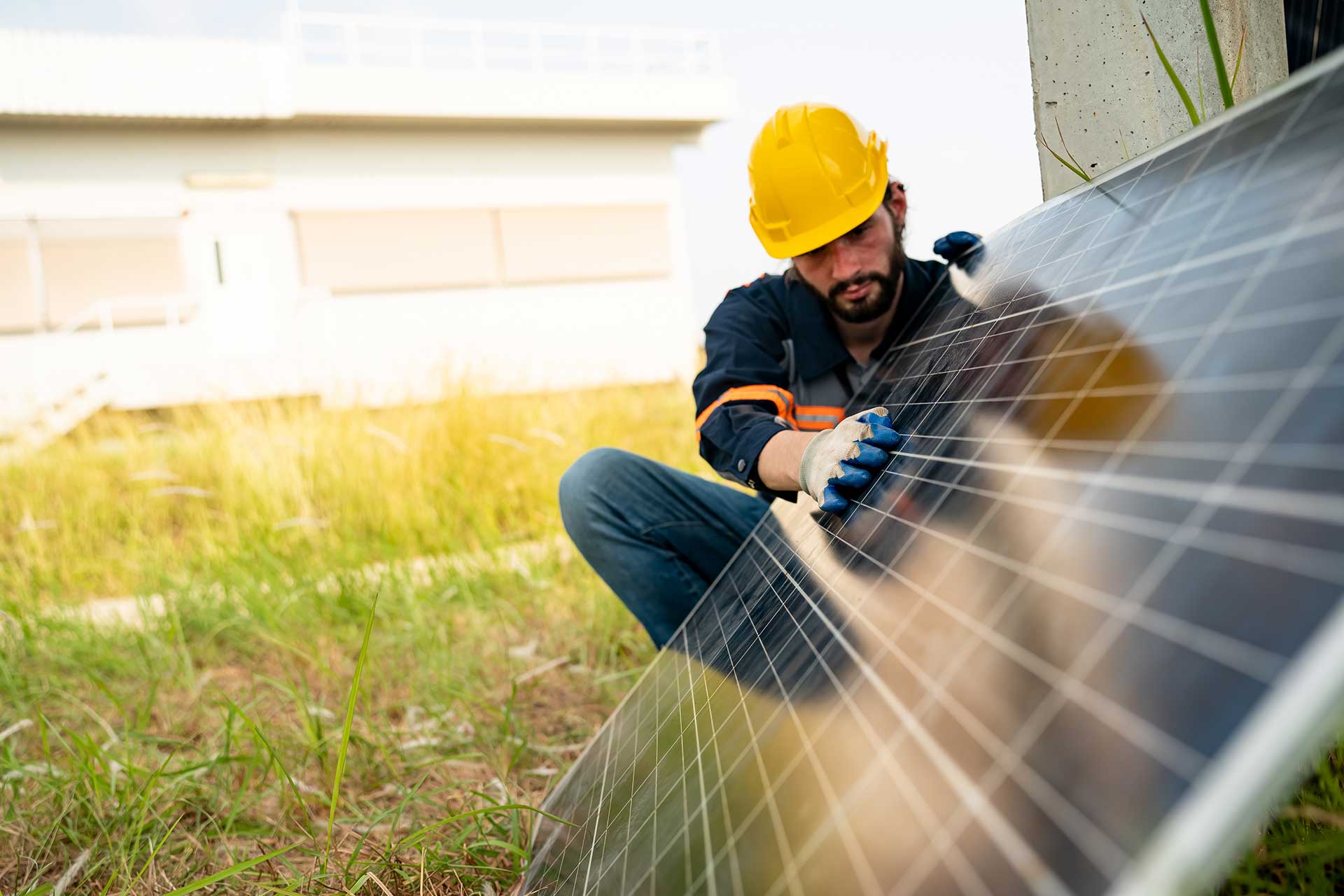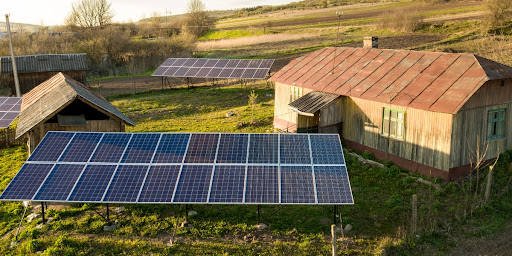At the Off-Grid Solar Works, we consider two categories of electrical requirements when planning an off-grid solar installation: Energy and Power. This post is the second in a series to focus on energy, while a later series of posts will address power requirements. This post will address the choices involved with solar panels and the solar panel array.
Please take a quick look at our first post in the energy series if you are not 100% sure you know the difference between kW and kWh (power versus energy).
Solar Panel Rating and Production
The actual production of the solar panel will be different than the nominal watt rating of the panel. Plus, there are energy losses in the path from the solar array to the appliance. Solar panel specifications provide ratings for output under ideal Standard Test Conditions as well as more realistic ratings for actual field conditions.
The actual field conditions relate not only to environmental conditions such as temperature and weather but also to the angle (slope of the panels) and azimuth (direction the panels are facing relative to the sun). Optimizing these factors in an off-grid solar installation is important for achieving the best energy output. In addition, the newer generation of panels can produce “bifacial gain,” which is the production of electricity from the back of the panel to complement the primary production from the front of the panel. In off-grid systems using ground-mounted arrays, the back of the panels is exposed to much more ambient light than a roof mount, and some manufacturers report bifacial gains of up to 30%.
Are High Efficiency Panels Important?
Panel efficiency is commonly considered when choosing panels. It is important to note that “panel efficiency” is similar for most panels and is usually only a key factor in space-limited arrays. Efficiency relates to the amount of electricity that is produced on a specific surface area (e.g., a square meter). Most often, larger wattage panels are also correspondingly larger in size because of similar panel efficiency.
There are some high-efficiency panels that are smaller in size and still produce the same or more electricity than other larger modules. Often, high-efficiency panels come at a cost premium. The bottom line is that higher-cost, high-efficiency panels may not be the best choice if array space is not severely restricted.
What is the Best Panel Size?
Size is another factor in choosing panels. Larger wattage panels (e.g., 500 watts) are popular choices for off-grid solar installation using ground-mounted arrays. On a ground mount, the number of “bays” often directly correlates with the structure’s cost. Larger panels require fewer bays and potentially lower costs for the array. Still, the specific vendor’s product must be reviewed to understand the cost of additional pillars and other support structures.
Ground Mount versus Roof Mount, Temporary versus permanent
Very often, a roof mount is not possible for off-grid arrays due to limited roof space availability. However, there is an increase in the use of “barndominiums” and large metal buildings off-grid, which enable roof mounts.
A roof mount is almost always less costly and less work than a ground mount. However, as stated earlier in this post, a potentially significant gain in panel production may be achievable from a bifacial boost when panels are mounted on a ground mount.
Temporary vs Permanent Array
A final thought for this post is temporary versus permanent array. Our experience over the past 15 years is that a significant percentage of off-grid projects could benefit from a relocatable array. A frequent example is an individual who begins living off-grid, either full or part-time, in an RV. The plan is to build a more permanent structure (e.g., a home) on the property, but typically, this is a year or more in the future.
In these situations, it may be a reasonable strategy to use a relocatable or temporary array and build a permanent array (ground or roof) when the permanent structure is complete. Typically, a temporary array will be a ballast-mounted ground mount or a ground mount that uses earth anchors instead of concrete pillars and posts.
At Off Grid Solar Works, we can supply a temporary array (panels and mounts) and documentation to support your permit application. As an added benefit, the panels and array can be provided with no shipping costs, along with the purchase of a PowerCenter.
How to Choose?
It is impractical to calculate production by hand given the number of variables and since the field conditions change continuously by time of day and time of year. At Off Grid Solar Works, we provide free, noncommercial use of the Estimator software that helps estimate the production of your off-grid solar installation.
Determining the best strategy for producing your off-grid energy is complex. You can run multiple what-if scenarios to test different strategies using the free Off Grid Solar Works Estimator software.




